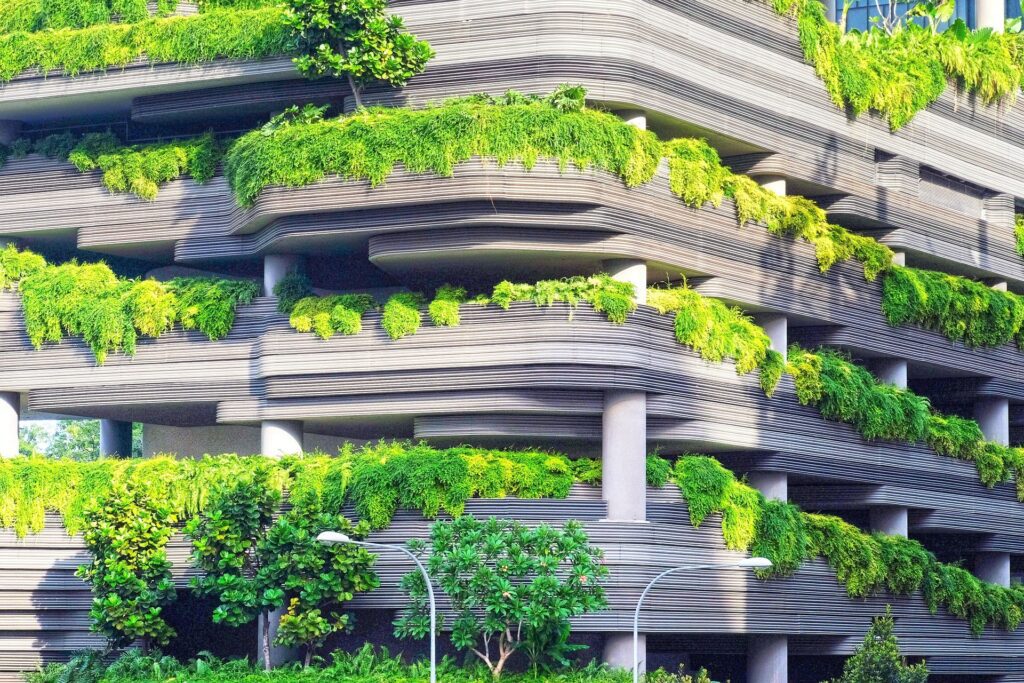As the world becomes more environmentally conscious, the construction industry is embracing sustainable practices to minimize its impact on the planet. Sustainable construction focuses on creating buildings that are energy-efficient, resource-efficient, and environmentally responsible. In this blog post, we will explore the top trends in sustainable construction that are shaping the future of the industry and contributing to a greener world.
- Energy-Efficient Design:
One of the key trends in sustainable construction is designing energy-efficient buildings. This involves incorporating features such as proper insulation, efficient HVAC systems, smart lighting, and renewable energy sources like solar panels. Energy-efficient design not only reduces carbon emissions but also lowers operating costs for building owners. - Green Materials and Construction Methods:
Using eco-friendly and sustainable building materials is another important trend in sustainable construction. This includes utilizing recycled materials, sustainably sourced wood, low VOC (volatile organic compound) paints, and sustainable concrete alternatives. Additionally, construction methods that minimize waste, such as modular construction and prefabrication, are gaining popularity. - Water Conservation:
Water scarcity is a global concern, making water conservation an essential aspect of sustainable construction. Installing water-efficient fixtures, implementing rainwater harvesting systems, and utilizing graywater recycling techniques help reduce water consumption in buildings. Water-saving landscaping designs, such as drought-resistant plants and smart irrigation systems, are also being embraced. - Green Roofs and Living Walls:
Green roofs and living walls are becoming increasingly popular in sustainable construction. Green roofs involve covering a building’s roof with vegetation, providing insulation, reducing stormwater runoff, and improving air quality. Living walls, which are vertical gardens installed on building facades, enhance aesthetics, provide insulation, and mitigate the urban heat island effect. - Net-Zero Energy Buildings:
Net-zero energy buildings aim to produce as much energy as they consume, resulting in a net-zero carbon footprint. This is achieved through a combination of energy-efficient design, on-site renewable energy generation, and energy storage systems. Net-zero energy buildings are a significant trend in sustainable construction, representing a commitment to environmental stewardship. - Smart Building Technology:
Integrating smart building technology into sustainable construction allows for better energy management and occupant comfort. Features like smart thermostats, automated lighting controls, occupancy sensors, and building management systems optimize energy usage, improve indoor air quality, and enhance user experience. - Passive Design Strategies:
Passive design strategies utilize natural elements to reduce energy consumption. These strategies include optimizing building orientation, using natural ventilation, maximizing natural daylight, and incorporating shading elements. Passive design reduces the reliance on mechanical systems, promoting energy efficiency and occupant comfort. - Circular Economy Practices:
The concept of a circular economy, which aims to minimize waste and maximize resource efficiency, is gaining traction in sustainable construction. This involves reusing and repurposing materials, implementing construction waste management plans, and prioritizing deconstruction and recycling over demolition. Embracing circular economy practices reduces landfill waste and conserves valuable resources. - Green Certifications and Standards:
Certifications and standards such as LEED (Leadership in Energy and Environmental Design) and BREEAM (Building Research Establishment Environmental Assessment Method) are driving sustainable construction practices. These frameworks encourage sustainable design, construction, and operation, certifying buildings that meet specific criteria related to energy efficiency, water conservation, indoor air quality, and materials selection. - Community Engagement and Social Sustainability:
Sustainable construction extends beyond environmental considerations. It also encompasses social sustainability, focusing on creating spaces that promote the well-being and health of occupants. This includes incorporating green spaces, prioritizing accessibility, supporting local communities, and promoting social equity in construction projects.
Conclusion:
Sustainable construction is shaping the future of the industry, providing innovative solutions for a greener and more sustainable world. From energy-efficient design and green materials to water conservation and smart building technology, these top trends are transforming the way buildings are constructed. Embracing sustainable practices not only benefits the environment but also enhances the comfort, health, and long-term value of buildings. As the demand for sustainable construction grows, it is essential for industry professionals to stay informed and adapt to these trends, contributing to a greener future for generations to come.



